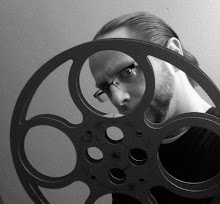Football is a dangerous sport, and it is at its most
dangerous on the professional level, where bones and ligaments and muscles are
smashed and torn and shattered. Today, we know that the most important muscle,
the brain, is the most vital to a player…and also the most vulnerable, and that
it would foolish to deny that smashing heads together would never cause a
problem inside the ol’ coconut. But it was only a short time ago when the
National Football League (NFL), the biggest sports league/corporation in the
world…did exactly that.
After Hall of Fame player Mike Webster (David Morse) passes
away, his autopsy is performed by Dr. Bennet Omalu (Will Smith) who discovers a
new deteriorating disease of the brain caused by years of impacts. With the support
of his new wife (Gugu Mbatha-Raw), boss (Albert Brooks), and former team doctor
(Alec Baldwin), Dr. Omalu publishes his findings, and is immediately attacked
by the NFL.
CONCUSSION sets itself up as a David vs. Goliath story, with
the relatively unknown (but very well educated) Dr. Omalu going up against a
corporation which, as the film says, owns a day of the week once held down by
the Church. Dr. Omalu, who is Nigerian born but knows next-to-nothing about the
business or the cultural impact of football, has all the good intentions behind
him and only wants the truth to come out to protect players…and kids who are
playing the game. In retaliation, the NFL fires back by discrediting Dr. Omalu,
even going as far as hiring their own doctors to offer differing opinions. In
addition to being David vs. Goliath, CONCUSSION morphs into a look at doctors
who are on a corporate payroll and where their loyalties really are.
While the material is perfect for a good drama, CONCUSSION
stumbles around like a cold-cocked player in the telling of its story. The film
is assembled of scene after scene after scene of big, long speeches; often with
Dr. Omalu long-windedly telling (or yelling at) people how the truth must be
known…or of other people even more long-windedly telling or yelling at Dr.
Omalu to let him know that the NFL is going to crush him. It’s an entire film
of big speeches, most of it redundant, giving CONCUSSION a very dull feel.
Director Peter Landesman, working off his own script, does way too much telling
and not enough showing.
If not for Will Smith, CONCUSSION would be a disaster on the
field. Smith nails his accent perfectly, and displays the emotions of compassion,
confusion, and the weight of the sporting world on his shoulders in a great performance.
Smith vanishes into the role in one of his best outings. The lovely and
talented Gugu Mbatha-Raw keeps up with Smith as good as he is, and goes through
her own set of tough emotions. Albert Brooks is once cast as a grumpy old man,
but it works and he is once again very funny despite the harsh makeup job he
has to act through. Alec Baldwin gets a lot to do but his Louisiana accent only
shows up every once in a while. Luke Wilson has the odd job of playing the
well-known NFL commissioner Roger Goodell, but only gets a few lines (during
press conferences) and is smartly used sparingly. The show is nearly stolen by
David Morse, who as the rapidly deteriorating Mike Webster shows just how
frightening this newly discovered disease really is. Morse is so good, the film
could have survived on him alone.
There is a very long buildup headed towards some sort of
expected showdown which never happens, and although the history books don’t
call for it, as a film there is very little climax. There is a very important
story to be told here, but despite a great performance by Smith, CONCUSSION
feels like a football team which moves the ball all over the field, but never
crosses the goal line.
BOTTOM LINE: Rent it

















